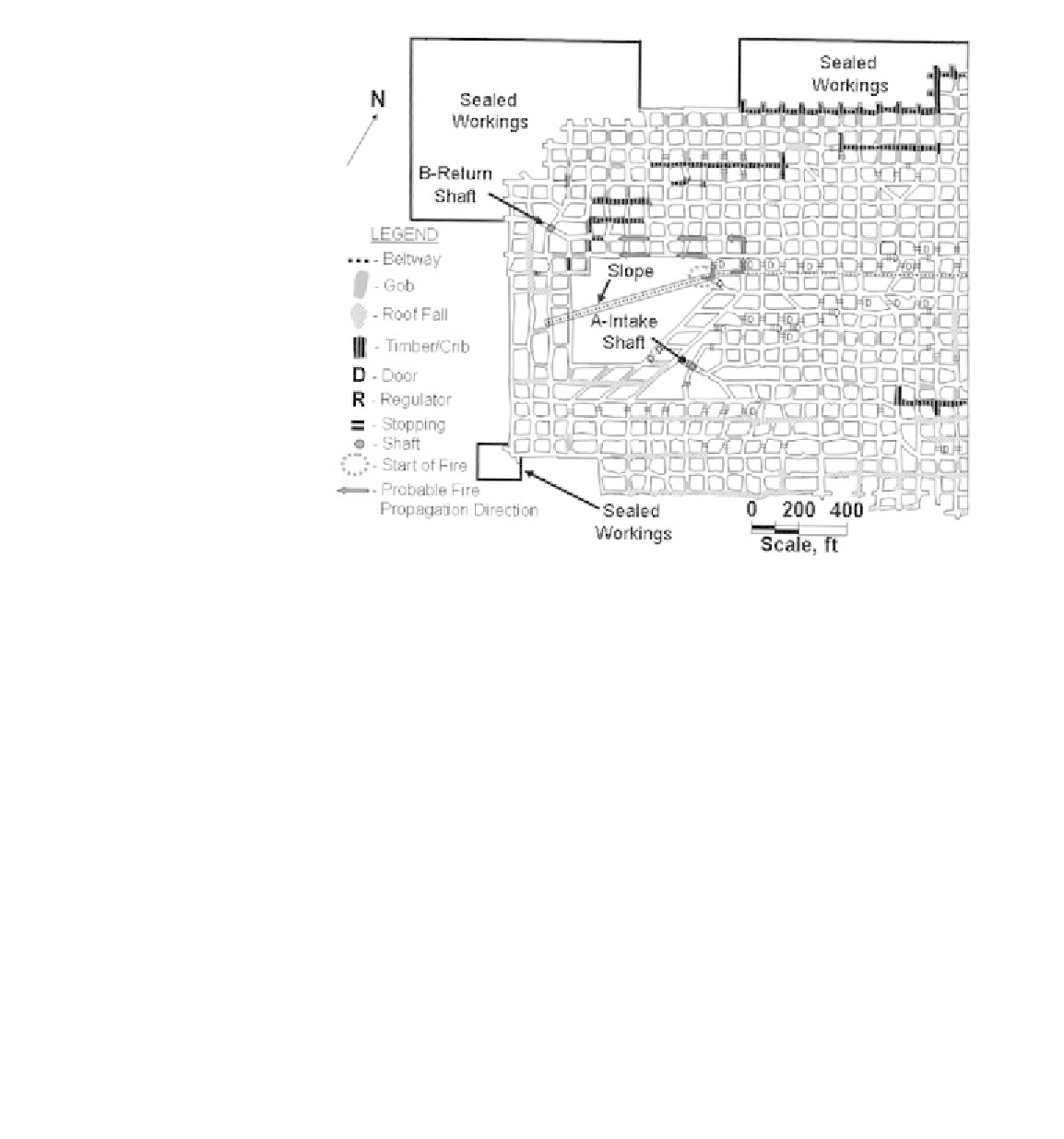Agriculture Reference
In-Depth Information
Figure 7.8
Map of the fire zone
in the Excel No. 3 coal mine in
eastern Kentucky.
However, there is promise. Recent studies have shown that certain foams can
deprive fires of O
2
over extensive areas. For example, a study sanctioned by the
U.S. National Institute of Occupational Safety and Health (NIOSH) showed
preliminary success in sealing a coal mine from oxygen inflow and suppression of
the fire with liquid nitrogen and gas-enhanced foam.
4
The technology needs to
be advanced to address very large fires. The fire studied by NIOSH (see Fig. 7.8)
was caught in the early stages and suppressed within two weeks. But like many
engineering prototypes, showing that it
can
work is the first step to ensureing that
it
will
work.
Another active engineering approach is an enhancement of existing processes.
For example, in addition to conserving present levels of carbon sequestration,
technologies can be adapted to
increase
the rates of sequestration. Every sink
shown in Figure 7.7 is a candidate. The scale of such technology can range
from an individual source (see Fig. 7.9), such as a fossil-fuel-burning electricity
generation station that returns its stack gases to an underground rock stratum,
to an extensive system of collection and injection systems that includes an en-
tire network of facilities. A combination of disincentives such as carbon taxes
and application of emerging technologies can decrease the carbon flux to the

Search WWH ::

Custom Search